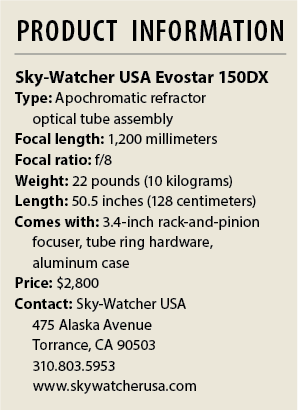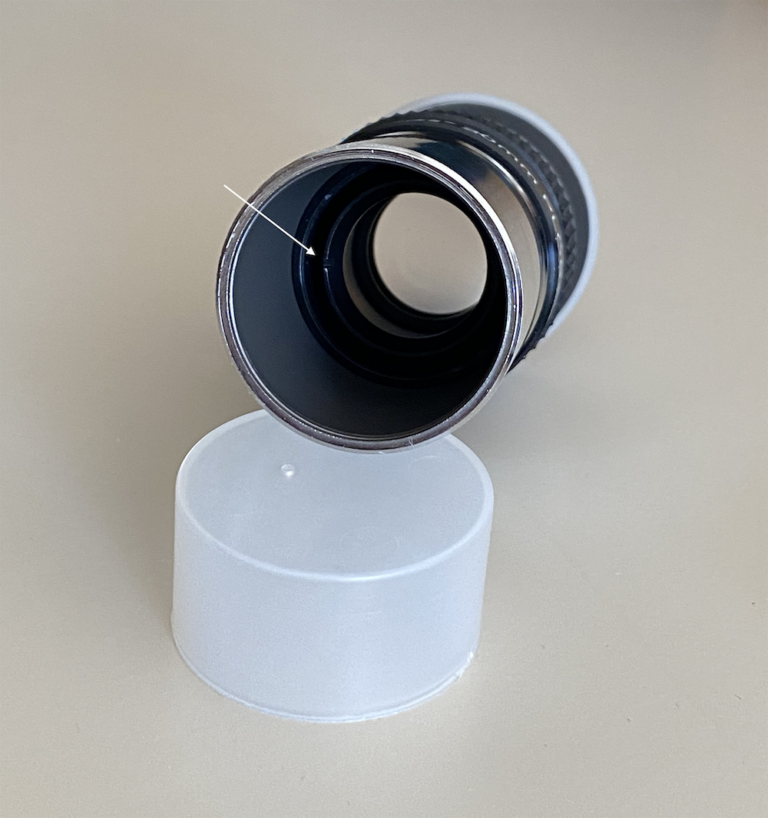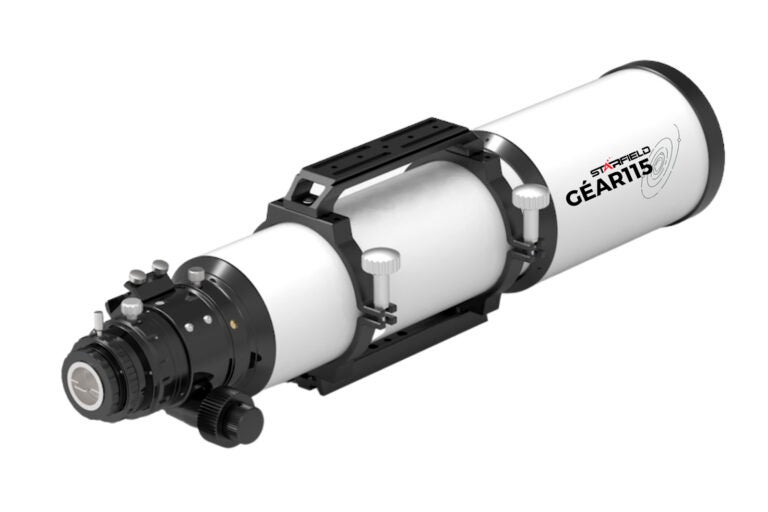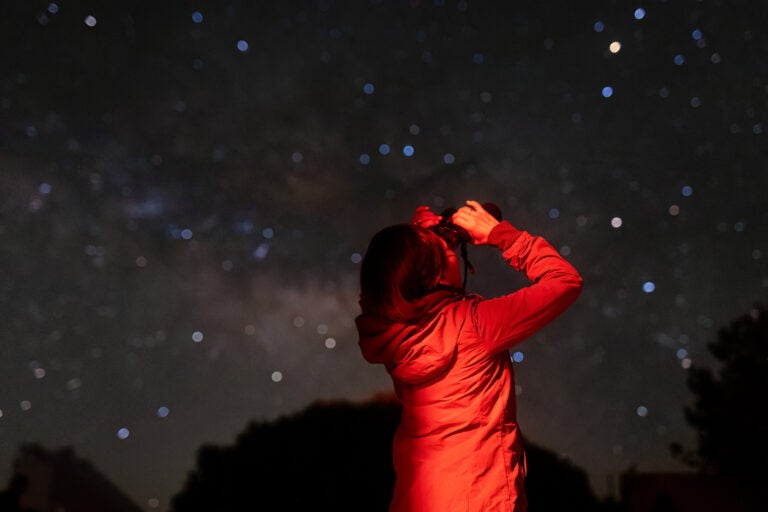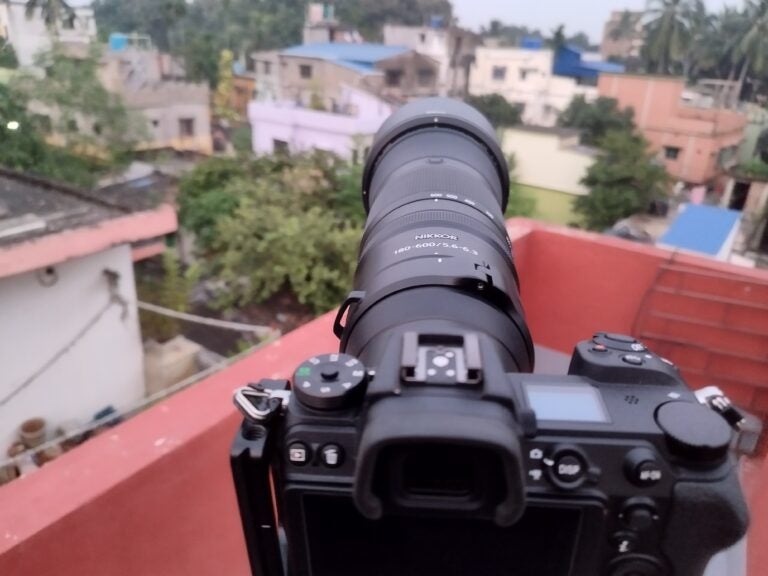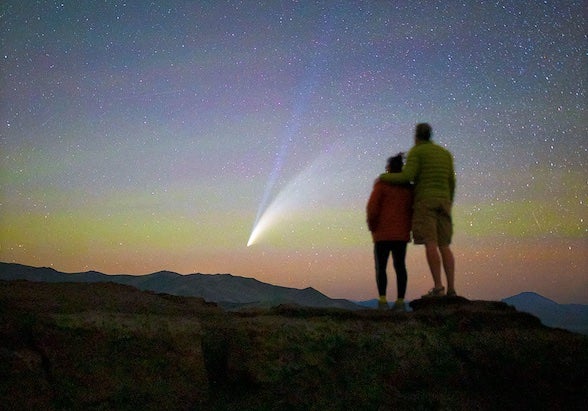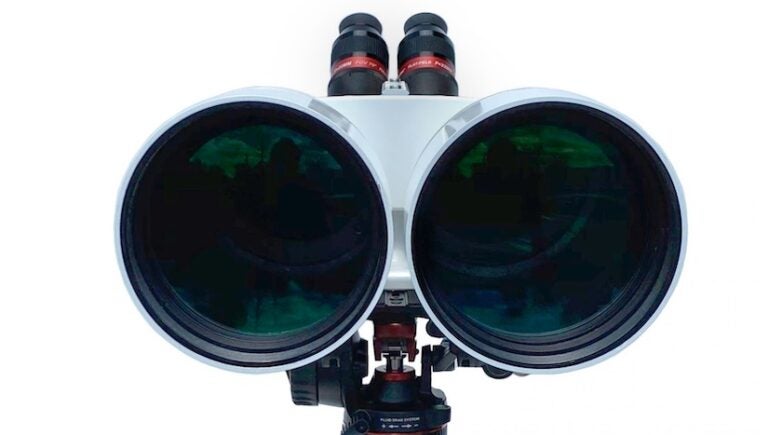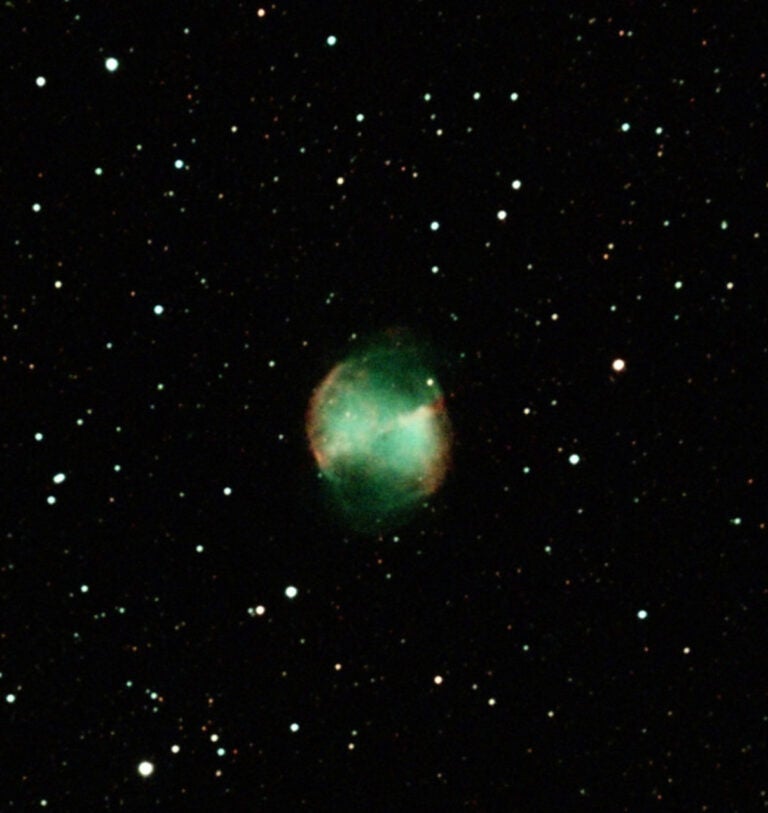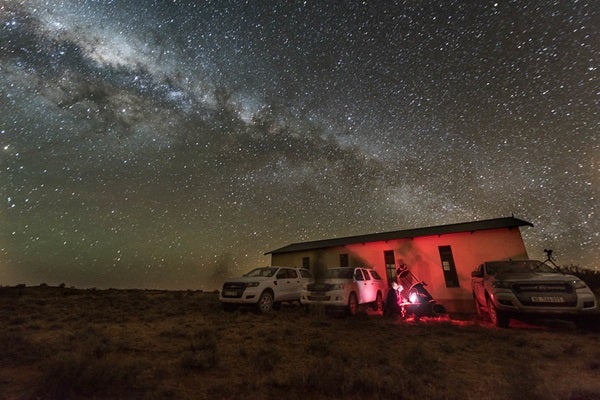The views through these scopes are second to none and provide magnificent moonscapes, sharp planetary vistas, pinpoint stars, and deep-sky objects set against a jet-black background.
Attaining optical perfection comes with a price, however. Inch for inch of aperture, APOs are the most expensive class of amateur telescope.
Enter Sky-Watcher
Recently, a midpriced class of APOs has made a big splash in the marketplace. While still pricey, they strike a balance between expense and quality. Leading the way is Sky-Watcher USA’s line of Evostar refractors. Ranging in aperture from 2 inches to 5.9 inches, Evostar refractors are built around two-element objective lenses.
One of those elements is ED glass designed to help squelch unwanted optical failings while enhancing image contrast and sharpness. Although the exact ED glass used is deemed proprietary information by the manufacturer, a product specialist told me that “the glass is a well-known, quality glass.” Sky-Watcher USA’s Metallic High-Transmission Coatings (MHTC) further reduce false color, while internal baffling and a flat black interior minimize stray light from infiltrating the optical path.
The flagship Evostar 150 comes in two different versions. Both are identical optically. The only differences are in some of the mechanics. The Evostar 150 comes with a Vixen-style dovetail plate and a 2″ focuser with a 1¼” adapter. The Evostar 150DX includes a dual-speed 3.4-inch rack-and-pinion focuser with 1¼” and 2″ adapters, rotatable tube rings, a Losmandy D-style dovetail plate, a 3.75″ extension tube, a Canon DSLR adapter, and dust caps. Although a finder doesn’t come with either model, you’ll find a standard shoe-style base mounted on the tube adjacent to the focuser. However, you’re on your own for eyepieces and a suitable mount.
Mechanical excellence
This past autumn, I had a chance to put the Evostar 150DX through its paces to see whether the designers at Sky-Watcher USA had achieved their goal. I came away highly impressed.
The scope’s sturdiness was immediately apparent as I lifted it out of the heavy-duty, custom-fitted aluminum carrying case. The case’s exterior measures 553/8″ long by 15¼” wide by 11½” high (141 by 39 by 29 centimeters), and it has plenty of room inside for accessories.
The robustness of the case comes at a price, however: weight. The case alone weighs twice as much as the telescope. The Evostar 150DX with the rings and dovetail plate in place, but without a finder or eyepiece, weighs 24.8 pounds (11.2 kilograms). When the refractor is nestled in the case, the pair totals 61.6 pounds (27.9 kg). While that is manageable by one person — I did it — it’s best carried by two. There is a single carrying handle centered on the case, as well as one at either end. If you will be transporting the Evostar to a dark-sky site by yourself, a soft, padded case will be more practical. Leave the hard case at home for safe storage.
The tube assembly, with the dew shield threaded in place and the focuser racked all the way in, measures 49 inches (124 cm) long. Tube diameter is 7.1 inches (18 cm), while the dew shield is 8 inches (20 cm) across. Inside, three flat-black light baffles help suppress unwanted spurious light from spoiling the view.
The oversized focuser’s drawtube has 3.5 inches (8.9 cm) of back-focus travel. The focuser is rotatable, and Sky-Watcher USA marked the drawtube with graduations. Both features make it easier for photographers to view through camera viewfinders and repeat a focuser setting once established.
The aluminum tube is painted high-gloss black, as are the focuser and tail stock. For contrast, the dew shield is gleaming white while the dovetail base plate has a green anodization. Together, the colors blend to create an impressive look.
To test the scope, I enlisted the help of my observing buddy, Rob Guasto. We attached the scope to his heavy-duty equatorial mount, and within minutes were ready to go. The waxing crescent Moon was our first target. Through a premium-grade eyepiece, the lunar surface looked incredibly sharp. Contrast was also striking, with jet-black shadows against a sunlit surface of varying shades of white and gray. There was some minor purple fringing visible around some of the starkly lit crater rims on this unforgiving target, but it was barely noticeable against such an impressive scene.
Some quick photos of the Moon through the Evostar confirmed my visual impression and were among the sharpest I’ve ever taken. The minor color fringing around some of the crater rims was also evident in the photos, but not nearly enough to spoil anything. For a reality check, I later posted some on social media just to gauge reaction. The comments were all enthusiastically positive, with lots of happy emojis littering my wall.
Next, we aimed at Saturn. Despite the planet’s low altitude at the time, the image was sharp. The dual-speed focuser proved its worth when we cranked up the magnification to 200x. Both the Cassini Division and the delicate C (Crepe) ring were evident, as was the planet’s shadow cast onto the rings. The dual-speed focuser’s coarse motion was even and smooth, without any binding or slippage, as was the fine focus.
Star testing on a couple of randomly chosen 3rd-magnitude stars (a good brightness level for the aperture) showed identical diffraction patterns on either side of focus, proving the objective was well figured and collimated. To push the color correction of the apochromat, I aimed toward brilliant Vega. Like the Moon, Vega displayed some minor bluish residual color. But the in-focus diffraction rings were spot on.
Continuing the sightseeing, globular clusters M13 and M15 were both nicely resolved at 133x. I was especially impressed that M13 revealed its unusual “propeller.” This feature is formed by three subtle dark lanes just off center from the cluster’s core that form the letter Y, or as many call it, a propeller. (See July 2018’s Reader Gallery for an image that shows the feature, taken by astrophotographer Rodney Pommier.) Normally, the propeller is challenging through 8- to 10-inch apertures, but it was evident in the Evostar 150, thanks to the optical system’s high quality. I have never seen it through a scope this small before.
The Dumbbell Nebula (M27), the Ring Nebula (M57), and the Little Dumbbell Nebula (M76) were equally impressive. Viewing each at 133x, they all showed more detail than I would expect from a 6-inch scope. I was especially taken by the ethereal appearance of the Ring and how it seemed to float among a starry field with a black backdrop.
Everything we viewed through the Evostar 150 was sharp with superb contrast. Colors in objects such as the gold-and-blue double star Albireo (Beta [β] Cygni), as well as the ruby jewels hidden among the sapphires of the Double Cluster (NGC 869 and NGC 884), were beautifully displayed.
Under steady seeing, the Evostar handled high magnification well. The four stars that make up the Double-Double (Epsilon [ε] Lyrae), for instance, were cleanly separated as four distinct pinpoints at more than 400x when seeing was steady. Still tighter pairs, like 53 Aquarii, at magnitudes 6.3 and 6.4 separated by 1.5″, were also resolvable. But I cannot definitively say that I could detect the duplicity of Struve 2751 (Σ2751) in Cepheus, another test target. Those stars are separated by 1.0″, which is close to this aperture’s theoretical limit of how tight a double star it can separate. Based on what I could see, however, I bet it’s doable with this scope under better seeing.
The bottom line
All in all, I came away highly impressed with the Sky-Watcher USA Evostar 150DX. Outstanding optics, combined with excellent mechanics and a price that’s a fraction of some of the other APOs in the field, make this an excellent choice for anyone looking for a large refractor.


